Music Mixing, Sydney
Are you interested in learning more about mixing music? You've come to the right place! Whether you're a professional or want to have some fun at home learning to mix music, this article will cover all the basics of mixing. Read on for tips and tricks, as well as an explanation of how we do things over here at RW Productions.
We offer a range of services that include composition, production, audio engineering and mastering - all necessary steps to get your final product ready for distribution. But before we dive into our process (which is where most people are interested), let's talk about what goes into creating a great mix from scratch.
The thing about mixing is that it's not just one skill. A mix engineer can't achieve an acceptable mix without a solid understanding of both production and engineering, as well as an intuitive sense of what the listener might want to hear next. This means that you need to know your tools inside and out - from software plugins to studio monitors, everything matters when you're crafting a mix.
What is Audio Mixing?
Audio mixing is the process of adjusting volume levels and audio effects to create the perfect sound for your project. It's often performed in a studio, but it can also be done on location or at home with some basic equipment if you know what you're doing.
Since mixing is such an intricate process that relies heavily on both production and engineering skills, we've created this guide to explain how our team achieves great mixes every time - from solo acts (acoustic guitar) up through full-scale productions (full band). We hope it helps!
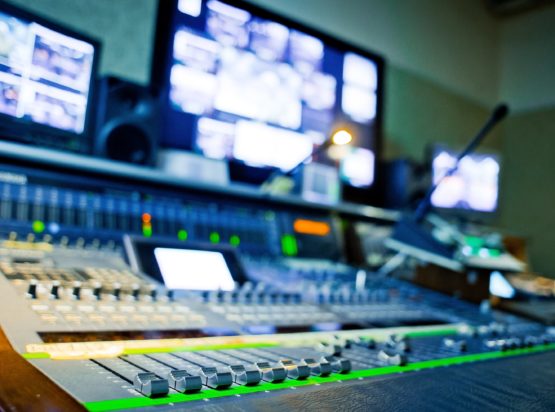
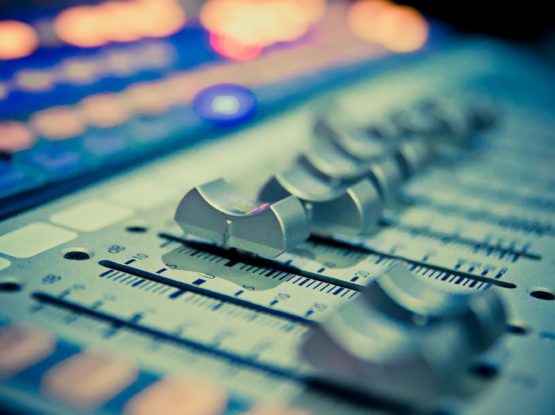
How do you mix music?
It's all in the details: So, what does it take to get a good sounding mix? From our perspective, three key ingredients make or break any given project: process (or "the way"), people and patience.
"The Way": The first step is having an understanding of how your sounds interact with one another in various contexts - studio monitors vs headphones vs speakers - and where they can be augmented or changed when needed to create something new. This means you need to have a pretty solid grasp on acoustics, psychoacoustic theory and frequency spectrum response curves if you want your music to translate well across as many systems as possible. It also means getting comfortable using all sorts of different EQs, compressors and effects processors.
"People": Of course you need to be able to capture good performances - that means musicians with an ear for exactly what they're doing, a facility for working together or soloing at will and the ability to play in time with each other when needed (and not just on their parts). But we've found over the years that careful attention also needs to be paid to details like mic placement and headphone mixes as well.
Patience: Mixing takes time! This is where most people fall off the proverbial wagon because it's easy enough to do near-perfect tracking but challenging indeed if everything then has to "fit inside" in post-production. If you don't have this patience, the rest of this article will be pretty much useless.
Tips for Home Mixing:
To get better at home recording mixes, you can use plugins such as Equalizer One Pro or Universal Audio's UAD G-Master buss compressor, which has presets that simulate popular commercial hardware compressors. You could also check out free EQ plugins like Fruity Filter Pack Free with presets designed by top engineers."
Is mixing music hard?
The mixing stage is the part of the recording process where all final changes to levels and frequencies are made. Compiling all these elements into a good mix is always a challenge, but it doesn't have to seem impossible! The first and most important thing in mixing, more than any other part of the production, is listening - really listening...
A great sounding mix starts with a great recording. The better your mic and preamps, the clearer and more detailed those recordings will be. Remember that just because you have expensive gear doesn't automatically mean your music sounds good - it's essential to know how to use them!
The second most important thing in mixing is levels, of course. If something is too loud or too soft, then it'll get lost regardless of what else you do, so make sure everything has a place in the mix...
One last tip for home mixers is to use effects sparingly. Again, it may seem like you need more than what the track needs so that it stands out on its own, but in reality, a less-is-more approach will lead to better sounding music overall!
Home Recording Studio Tips:
- Use EQs and compressors with caution - overuse of these tools can make your music sound "tinny" or artificial
- Don't aim for perfection too often when recording as this creates a polished sound rather than a non-authentic one.
- If you're unsure about using certain production techniques, then experiment at home first without any pressures before trying them professionally.
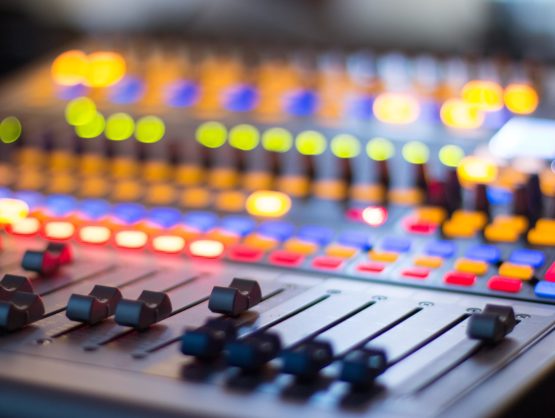

The Mixing Process
The art of music production is an incredibly intricate and delicate process. An effective mix process should balance a good mix between the song’s different elements, such as vocals, guitars, drums etc. The goal is to create a cohesive sound that maintains distinct instrumental separation while also creating emotional depth in each album's track.
The mixing process starts with recording tracks for your project or post-production work from either live instruments or pre-recorded audio files that the client uploaded into a digital audio workstation (DAW). Each instrument usually gets its own dedicated channel (volume fader). It can be processed individually using specific effects to achieve desired sonic characteristics - add more bass on drum channels, increase vocal reverb on lead vocals, adjust EQ for guitar distortion, and so forth.
When it comes to EQ features, you have to be careful not to over-process any frequency range. EQ should only be applied when necessary and with a surgical touch to preserve the natural sound of instruments or vocals instead of turning up the bass on everything that came out of your guitar amp last week.
The mixing process is often painstakingly slow due to intricate details required for precision—from having all tracks lined up at a consistent volume level (i.e., adjusting “gain”) so they can playback simultaneously without distortion; balancing individual levels between musical parts; ensuring each instrument isn't too loud or soft concerning other sounds coming from different channels - mixing requires patience and finesse.
As well as being mindful about other instruments and the wide dynamic range, the mixing engineer also needs to pay attention to EQ - or equalizing- as a means of boosting certain frequencies. A mix with too much bass will sound muddy, and an overly treble filled track may lack width.
There's no substitute for experience when it comes to mixing, but there are some basic steps that can get you started in the right direction:
- Line up your tracks at consistent volume levels on your DAW (Digital Audio Workstation). This is where we talk about "gain staging".
- Choose which elements should be more prominent in each section of the song by adjusting their relative volumes. For example, during a verse, you might want vocals louder than guitars, so they're not competing with one another.
At the same time, you don't want a mix to sound flat by adding too many plug ins or adding too much compression to each individual track. Audio mixing is an art form and having the mixing basics is key to the effective collaboration of all sounds in the entire song.
Use effects processing sparingly - if you’re not sure what something does, don't worry about it.
It's important to use a reference mix that sounds like the finished product while mixing your own song. This will help you understand how all of these elements work together and what they should sound like individually. It also helps train your ear so when mixes sound flat, it could be as simple as adding a high pass filter to the drums.
Now we've gone through some basic principles for home mixing, let's take this further and talk about perfecting your own mix.
Perfecting your own mix
With modern mixing, when it comes to digital audio workstations (pro tools, reaper, etc...), it is all subjective, just like the "perfect mix".
Generally, when it comes to mixing something at home or professionally in a studio, the mix is all about balance...
Achieving a balanced sound. This means that we want to make sure that each instrument has plenty of space and time within the mix. This will keep the song interesting for the listener who may get bored listening if they hear too many instruments competing against one another. Try focusing on how you can achieve a better feel rather than just EQing everything up, so it sounds louder and clearer (It's not always necessary). Mixes often become cluttered because there are too many elements playing together, leading to an unbalanced sound where nothing stands out.
In some instances, balancing your own mixes becomes difficult without professional guidance. Is your lead guitar competing with your background vocals? Is the bass volume drowning out your kick drum? Once you start mixing, to achieve a good balance, fresh ears will help.
Another important factor to consider is the song length - Keep in mind that if you have a lengthy piece, it will take longer for the listener to get bored with your mix. If you're working on an uptempo track, try adding some more reverb and delay effects or maybe even break up the drum pattern so there are gaps in between each sound which will give them a chance to breathe. This technique can also be helpful when trying to make use of space within your arrangement by creating build-ups towards crescendos (or drops) in energy levels where we want listeners ears glued during those moments.
A good rule is to listen to your mix on the car stereo that you are familiar with. If the sound quality is good, then you can be more confident in what you have done.
This process also has its pitfalls - You'll need to find your own preferences and figure out how to mask certain tracks so that they don't get too competitive with one another when battling for attention from listeners ears, which will depend on factors such as the genre of music (e.g., EDM vs Country). For example, suppose you're mixing a dubstep song. In that case, it might not make sense to mix in heavy reverb or delay effects because those effect types would exaggerate the bassline already present throughout most parts of this type of track. In contrast, country songs rely more on acoustic instruments like guitars and pianos instead of any big-sounding drum.
There is no specific way to approach mixing. Ultimately, the mixing decisions are yours. For more tips, read on!
Mixing is an art that takes time and practice to master, just like any other craft. There are many things you can do to improve the sound of your mix - from turning up the volume when certain instruments cut in/out, so they're not lost completely (e.g., if someone suddenly stops playing the guitar) or adding low pass filters, high pass filters, or effects such as reverb - but there's no "right" way because it all depends on what sounds good with a particular song for its genre and mood while still maintaining clarity across the whole track.
Recording engineers often spend hours listening back over mixes before deciding how best to proceed with them, whereas home mixing might involve shorter sessions depending on whether your own songs require as much scrutiny. One track can make a big difference to the overall sound quality and finished mix. And although there is no step by step guide to mixing well, most home mixers can benefit from following a few simple guidelines.
Mixing Techniques for Home Mixes:
- Listen to the song several times before going any further
- Eliminate background noise (e.g., turn off your computer or phone)
- Take note of what seems out of place and listen back with that in mind
- Monitor volume levels when tweaking individual sound layers and ensure they're not too loud or soft relative to other parts of the track
- Improve Your Sound Quality: Avoid Recording Loud Instruments Too Closely
- If you are recording an instrumental part, such as a guitar, remove it from close proximity to speakers if possible so there is less distortion on playback. This applies to all instruments and is fundamental to the production process.
Within your DAW (Pro Tools or similar)) you will have the following features to help you perfect your mix:
- Panning – You can pan sound from the left channel to the right channel and vice versa. This is very helpful for a stereo image and makes it so that certain sounds are not lost in the background noise, such as birds chirping.
- Volume - Adjusting volume without affecting other parts of the song is important when mastering because if one part gets too loud everything else may be drowned out. If there's a guitar solo at the end of a song, adjusting its volume should only affect what comes after it but not before. The same goes with drum fills midway through an acoustic ballad; they need more power than general instrumentation but still shouldn't drown out vocals at any point.
- EQ - If you have an acoustic guitar and want a more full sound, layer in an electric one on top of it to add some bass or treble. A low E string is pretty heavy so adding high strings will give the song a fuller sound without actually making anything louder than what was there before – just better balanced with the tracks.
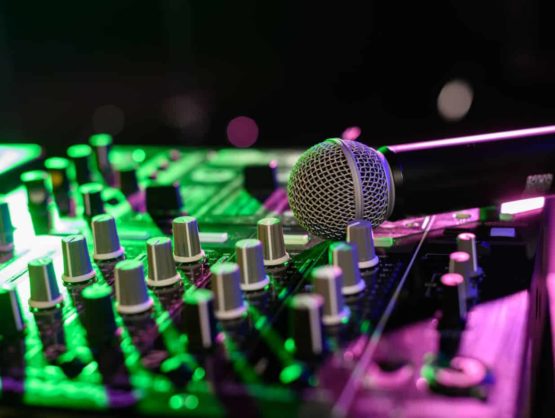
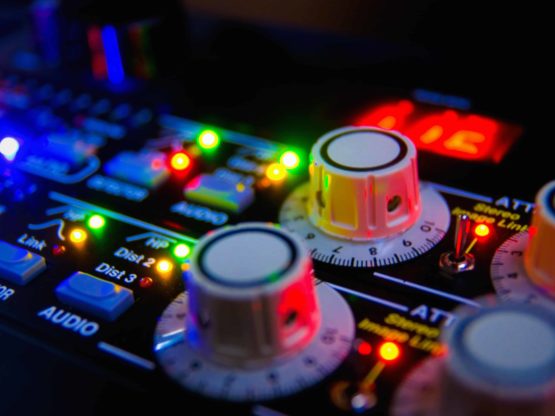
Preparing the final mix
In music production, a final mix is the final version of a song. It's also known as a mixdown, which is shortened to DnD (Digital and Disk).
Within a multi track recording, the final mix is the master copy. It's created by combining all of the tracks into one file, balancing and adjusting them to create a finished product that will sound good on any speaker system or playback device.
It can take hours upon hours to complete a perfect final mix and even more time fiddling with it after that - but when you achieve perfection in your song, then success as an artist has been achieved. The difference between a "rough mix" and a complete mix, is your ears!
If you have the mixing basics mastered, and a great balance between the tracks, then you will recognise the difference between an ok mix and a great one.
Bullet points:
- The final version of your song - it's also known as 'mixdown', shortened to DnD (Digital and Disk)
- Within a multi track recording, the finished mix is the master copy
- It takes hours upon hours to complete but when perfect it can signify success for an artist!
The difference between an ok mix and great one? Your ears.
What is the difference between mastering and mixing?
Mixing and mastering are not the same thing.
A mastering engineer takes the mixed final version of your song and tweaks it to perfection.
The process is an art form in itself, as they adjust EQs, compression settings, effects treatments and levels until it sounds perfect on any sound system or stereo. They also focus on increasing the dynamic range naturally without over-compression or artefacts (something which can occur if attempted at the mixing stage).
Mastering also improves the overall listening experience; making sure that each part of a track blends with other parts (e.g vocals are not too loud) and creating a cohesive feel from start to finish.
Mixing simply takes all these elements - tracks you've recorded onto your DAW for example- then balances them so audio engineers can hear what's going on without having to use headphones or monitors which can distort their judgement if used incorrectly!
You might have heard people refer to 'mixdown', this is the process of mixing your tracks down to a single stereo track for listening on speakers and devices like MP3-players
Mastering takes these mixed elements - often many more than one at once, such as vocals, guitar parts, drums and synths all together - then balances them so they work cohesively. It doesn't so much touch on individual tracks, but rather the mix as a whole.
Mastering can make your mix sound fuller, louder and more consistent over the frequency spectrum across different speakers, headphones or playback devices.
So when finalising a mix down to stereo for example in your DAW you'll often leave mastering until after you've mixed your tracks together because otherwise during the process of balancing the audio tracks, the dynamic range can be impacted and not sound great.
If you're confused about what to provide to the mastering engineer here are some basic pointers.
What do I need to prepare for a Mastering engineer?
For a seamless transition from your home studio to the mastering engineer, you'll want to prepare a master mix. This is typically done as an exported audio file in Wave or AIFF format and should be 24-bit 48 kHz if not already saved at these settings.
A high-quality stereo mixdown will include all of the necessary elements including:
- The music at a decent volume level with a good signal to noise ratio
- A clear, well-balanced mix of all the instruments and sounds in a stereo field
- An understanding that levels need to be brought down on things like lead vocals or guitar solos so they don't overload during mastering.
To make sure your mixes are at their best, here are some key things to consider:
- Use a calibrated, good quality monitoring system
- A clear mix with the correct balance of all instruments and sounds in your stereo field is key to giving the mastering engineer as much control over the sound as possible.
- They can't fix what you didn't do whilst audio mixing.
To give the mastering engineer more flexibility, you can provide the stems of the song. This will allow them to focus on specific sounds during mastering and make adjustments. You can separate music and vocals or go even deeper and separate guitars, bass and drums.
The mastering engineer is responsible for making sure the mix sounds good on all playback systems within a range of different settings: from your car stereo to high-end studio monitors or over headphones. They'll also get rid of any unwanted noises such as distortion or clicks that might have slipped in during recording sessions.
Some more music production tips to help with your audio tracks and when mixing audio are to:
- Use a compressor/limiter for vocals or lead instruments so they don't overload in mastering.
- A prominent vocal, guitar solo or key sound can be compressed during the mix process before it is sent off for mastering which increases the amount of headroom available.
Mixing music is a complex process that requires a solid understanding of production and engineering. It’s also subjective, which means the mix itself can vary from person to person based on their preferences.
Like anything else in life, it all comes down to detail; if you have something like the right balance between drums and vocals or EQ-ed out an annoying buzz before mastering your track, then congratulations--you are now ready for release!
If you need help with this part of the process though, RW Productions have got your back. We offer professional mixing services by talented engineers who know how to get your tracks sounding perfect. Contact us today for rates and availability!
